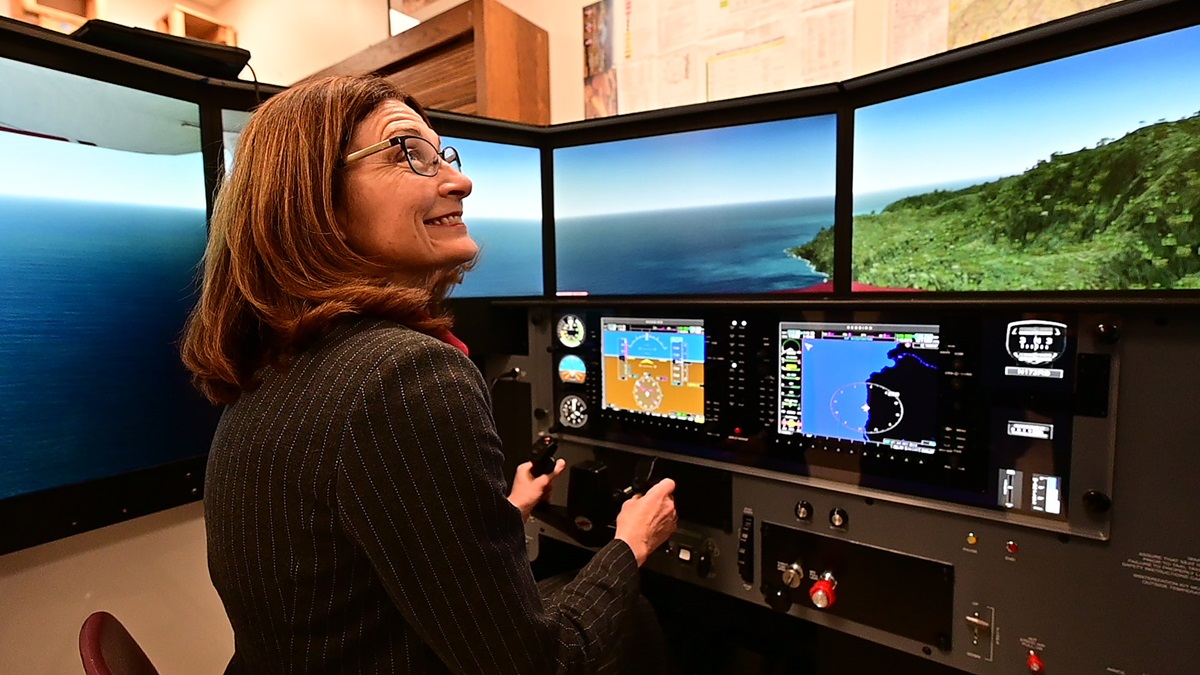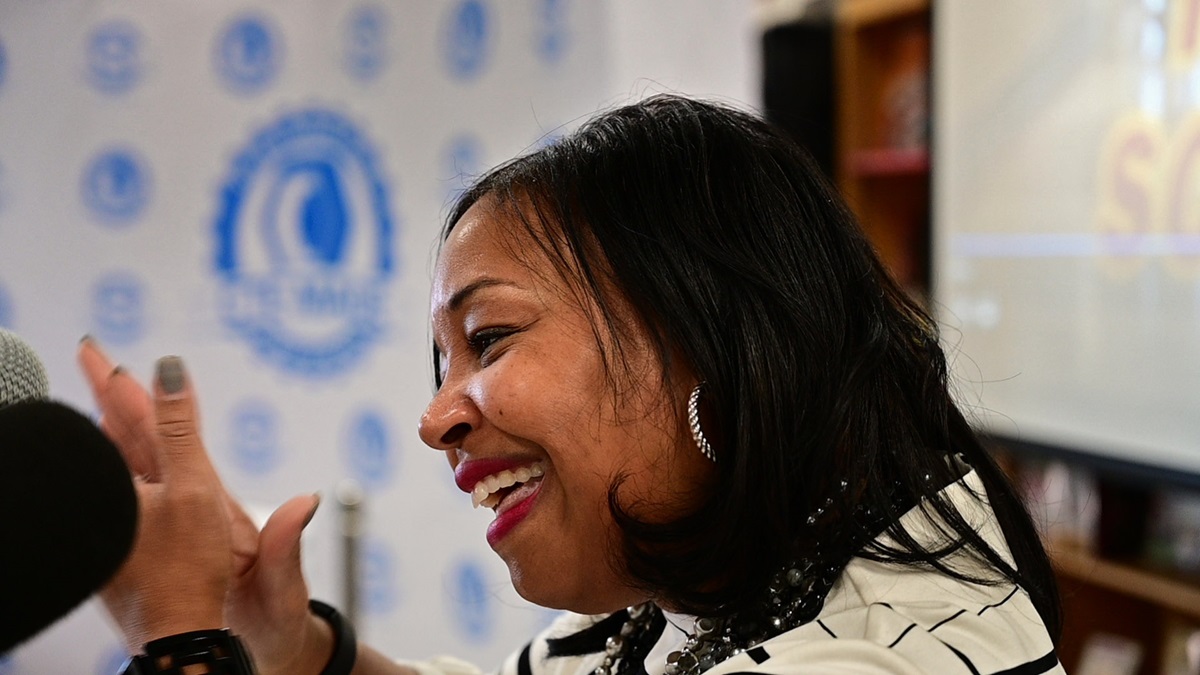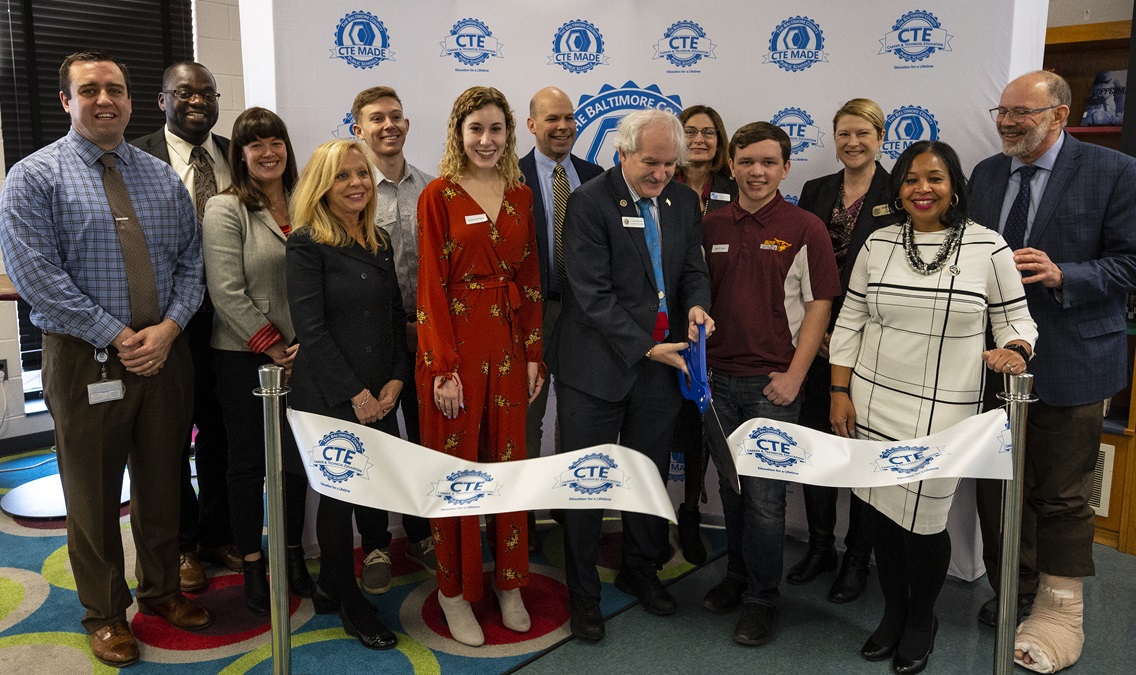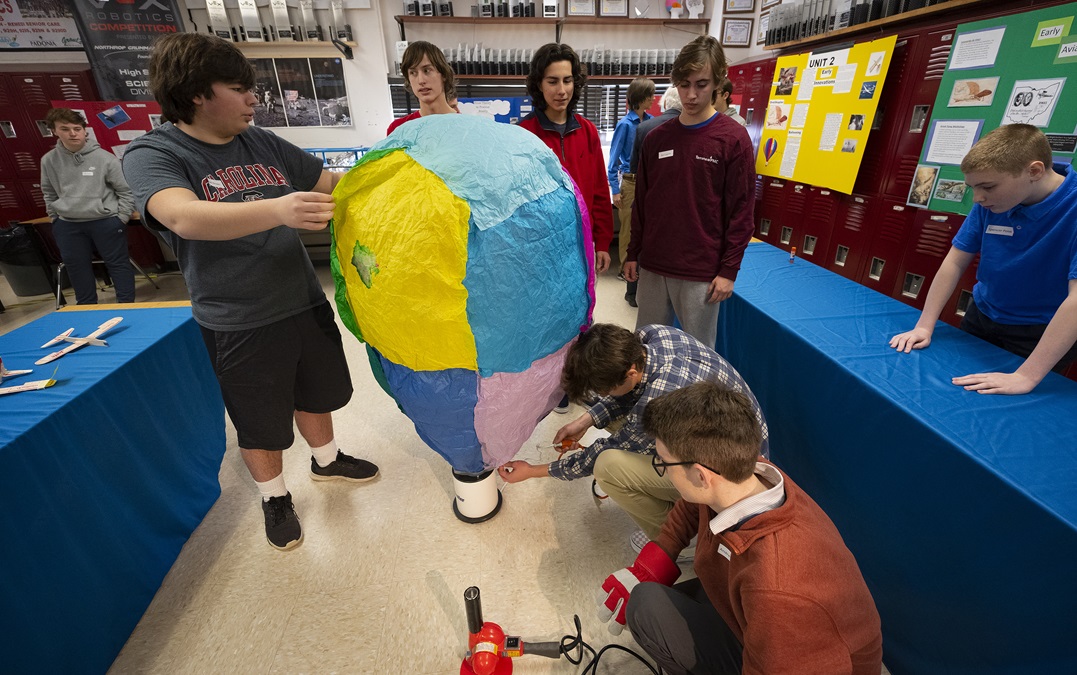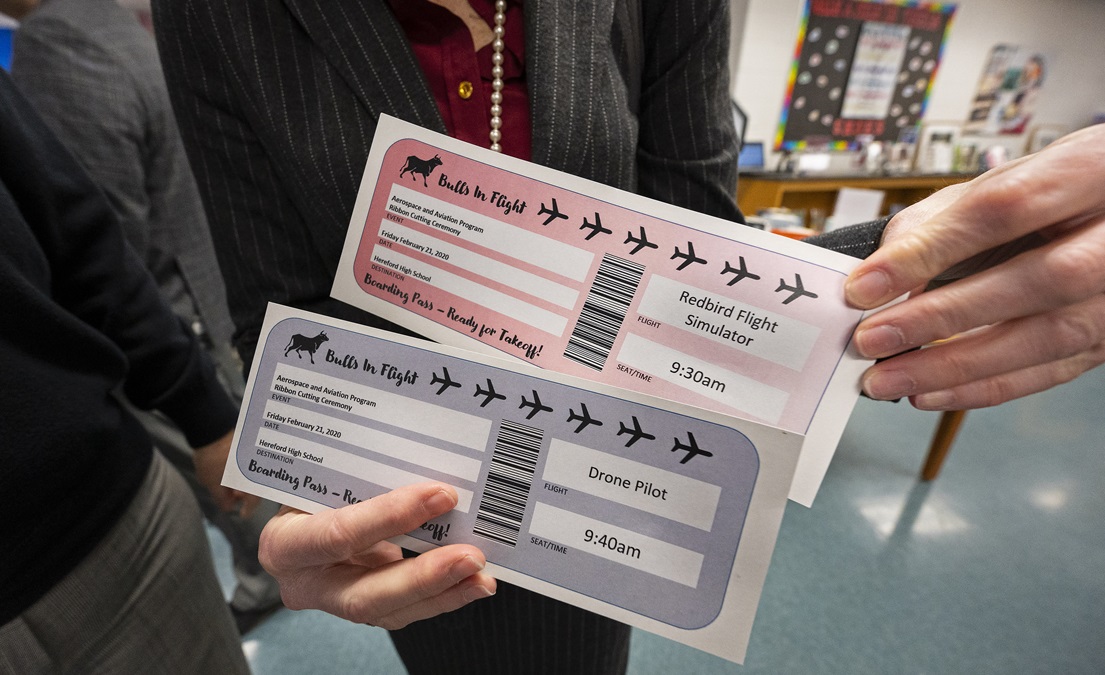More schools join AOPA aviation curriculum
More than 5,000 US students are participating in STEM aviation classes
Drones flew through the air and guests took turns piloting a flight simulator during the opening of an aviation technology program at Hereford High School near Baltimore, Maryland, powered by the AOPA High School Aviation STEM Curriculum for youth.
“Any suggestions?” asked Baltimore County School Board District 3 Chairwoman Kathleen S. Causey before she took the controls of a Redbird flight simulator under coaching from high school student Ben Yocum, who is taking science, technology, engineering, and math (STEM) classes.
She said using aviation as a science teaching tool was an “opportunity for our students to see what real-world training is like, and then to think about the occupations that are available in a wide variety” of aviation careers that could include technical career pathways.
Behind her, aviation class students Claire White and Daniel Allen demonstrated a drone obstacle course that they pre-programmed after writing a computer script. Other students used a hot air blower to make a multicolored-tissue-paper hot air balloon fly.
Gianna Patti, a senior with an eye on an engineering degree, said an aviation class highlight was the feeling of freedom that piloting a drone conveyed. “It was a lot of fun [because] you get to go wherever you want and just explore things that you’ve never seen from that point of view.”
She said the AOPA aviation curriculum allowed her “to branch out and see a different field of engineering” that could lead to a variety of potential careers. “I’m going to be majoring in mechanical engineering so I may end up in aerospace, or aviation—you just never know.” Her ideal job would be “working for NASA” or “Boeing, or Northrop Grumman—one of the big aviation or aerospace companies.”
She recommended younger students interested in aviation “just get involved” in a variety of school opportunities. Her curiosity about the electric car club led to aviation classes and mentorship from teachers. Those connections led to internships and connections that “have been really helpful” as she steers herself toward a career.
Baltimore County Public Schools Technology Education Supervisor Robin M. Bowden addressed dozens of school district officials, teachers, and aviation industry professionals who gathered for an official opening ceremony February 21 in Parkton, Maryland.
“We’re here today for the kids,” said Bowden as aviation class teachers Weston Fellows and Mike Doddo looked on. She predicted the aviation technology program, which was also rolled out at the school district’s Kenwood High School, would better prepare students to be “poised and prepared to fill future positions in the workforce.”
AOPA Director of Curriculum Development Erik M. Yates, who was on hand for an official ribbon-cutting ceremony, said more than 5,000 students in 161 schools and 34 states are currently using the ninth-, tenth-, and eleventh-grade STEM aviation curriculum—with plans to expand the program to twelfth grade for the 2020-2021 school year.
Yates noted that the initiative introduced aviation career possibilities to a diverse population who might not be aware of the opportunities. About 22 percent of the high school curriculum participants are female, and about 37 percent come from minority backgrounds. However, only about 7 percent of U.S. commercial airline pilots are female, and even fewer are from minority backgrounds.
Cindy Hasselbring, the White House Office of Science and Technology senior policy advisor, assistant director for STEM Education, was moved nearly to tears as she visited with students who participated in hands-on projects that she helped design, test, and implement during a three-year tenure as AOPA’s director of the high school aviation initiative.
The lifelong educator who helped jump-start the AOPA STEM aviation education program listened as freshman Sam Garifalos sat next to his space travel poster board project and shared his ambition to become an astronaut with a commercial space program. He confided that he would stand ready to explore outer space and “help colonize Mars to save humanity—if something ever happens to Earth.”


